
-
阿扎那韦
- names:
Atazanavir
- CAS号:
198904-31-3
MDL Number: MFCD08435966 - MF(分子式): C38H52N6O7 MW(分子量): 704.86
- EINECS:812-543-8 Reaxys Number:No data available
- Pubchem ID:148192 Brand:BIOFOUNT
| 货品编码 | 规格 | 纯度 | 价格 (¥) | 现价(¥) | 特价(¥) | 库存描述 | 数量 | 总计 (¥) |
|---|---|---|---|---|---|---|---|---|
| YZM000673-50mg | 50mg | ¥ 2126.00 | ¥ 2126.00 | Backorder | ¥ 0.00 | |||
| YZM000673-10mg | 10mg | >97% | ¥ 682.50 | ¥ 682.50 | 2-3天 | ¥ 0.00 |
| 中文别名 | 阿扎那韦(198904-31-3), 阿扎那韦; 雷亚塔兹; 硫酸阿扎那韦; |
| 英文别名 | Atazanavir(198904-31-3);Atazanavir ; Reyataz ; Atazanavir sulfate ; CGP75136 ; CGP75176 ; CGP75355 ; BMS232632 ; CGP 73547 ; CGP 75136 ; CGP 75176 ; CGP 75355 ; CGP-73547 ; CGP-75136 ; CGP-75176 ; CGP-75355 ; BMS 232632 ; BMS-232632 ; BMS-232632-05 ; C413408; |
| CAS号 | 198904-31-3 |
| SMILES | O=C(OC)N[C@@H](C(C)(C)C)C(NN(CC1=CC=C(C2=NC=CC=C2)C=C1)C[C@H](O)[C@H](CC3=CC=CC=C3)NC([C@H](C(C)(C)C)NC(OC)=O)=O)=O |
| Inchi | InChI=1S/C38H52N6O7/c1-37(2,3)31(41-35(48)50-7)33(46)40-29(22-25-14-10-9-11-15-25)30(45)24-44(43-34(47)32(38(4,5)6)42-36(49)51-8)23-26-17-19-27(20-18-26)28-16-12-13-21-39-28/h9-21,29-32,45H,22-24H2,1-8H3,(H,40,46)(H,41,48)(H,42,49)(H,43,47)/t29-,30-,31+,32+/m0/s1 |
| InchiKey | AXRYRYVKAWYZBR-GASGPIRDSA-N |
| 分子式 Formula | C38H52N6O7 |
| 分子量 Molecular Weight | 704.86 |
| 闪点 FP | |
| 熔点 Melting point | 208°C |
| 沸点 Boiling point | No data available |
| Polarizability极化度 | 76.9±0.5 10-24cm3 |
| 密度 Density | 1.2±0.1克/厘米3 |
| 蒸汽压 Vapor Pressure | 在25°C(est)下为1.0X10-26 mm Hg |
| 溶解度Solubility | |
| 性状 | 白色至浅黄色结晶性粉末。微溶于水 4-5 mg / mL。24°C下饱和溶液1.9的pH |
| 储藏条件 Storage conditions | -20°C Freezer |
阿扎那韦(198904-31-3,Atazanavir,BMS-232632)毒理性质:
Atazanavir can cause several forms of liver injury including transient serum enzyme elevations, indirect hyperbilirubinemia, idiosyncratic acute liver injury and exacerbation of underlying chronic viral hepatitis. Some degree of serum aminotransferase elevations occurs in a high proportion of patients taking atazanavir containing antiretroviral regimens. Moderate-to severe elevations in serum aminotransferase levels (>5 times the upper limit of normal) are found in 3% to 10% of patients, although rates may be higher in patients with HIV-HCV coinfection. These elevations are usually asymptomatic and self-limited and can resolve even with continuation of the medication. Atazanavir therapy (similar to indinavir) also causes increases in unconjugated (indirect) and total serum bilirubin that can manifest as jaundice in up to 10% of patients. These elevations are due to the inhibition of UDP glucuronyl transferase, the hepatic enzyme responsible for conjugation of bilirubin that is deficient in Gilbert syndrome.
The hyperbilirubinemia is usually mild, the increases averaging 0.3-0.5 mg/dL, but can be more marked in patients with Gilbert syndrome with increases of 1.5 mg/dL or more and clinical jaundice. The jaundice, however, is not indicative of hepatic injury.
Clinically apparent acute liver injury due to atazanavir is rare and the clinical pattern of liver injury, latency and recovery have not been well defined. The liver injury is idiosyncratic and rare and probably similar to the injury that is caused by other HIV protease inhibitors. The liver injury typically arises 1 to 8 weeks after starting the protease inhibitor and has variable patterns of liver enzyme elevation, from hepatocellular to cholestatic.
Signs of hypersensitivity (fever, rash, eosinophilia) are rare, as is autoantibody formation. The acute liver injury is usually self-limited and resolves within a few weeks of stopping the antiretroviral agent (Case 1).
In addition, initiation of atazanavir based antiretroviral therapy can lead to exacerbation of an underlying chronic hepatitis B or C in coinfected individuals, typically arising 2 to 12 months after starting therapy, and associated with a hepatocellular pattern of serum enzyme elevations and increases in serum levels of hepatitis B virus (HBV) DNA or hepatitis C virus (HCV) RNA. Atazanavir therapy has not been clearly linked to lactic acidosis and acute fatty liver that is reported in association with several nucleoside analogue reverse transcriptase inhibitors. Likelihood score: D (possible, rare cause of clinically apparent liver injury).
阿扎那韦(198904-31-3,Atazanavir,BMS-232632)实验注意事项:
1.实验前需戴好防护眼镜,穿戴防护服和口罩,佩戴手套,避免与皮肤接触。
2.实验过程中如遇到有毒或者刺激性物质及有害物质产生,必要时实验操作需要手套箱内完成以免对实验人员造成伤害
3.实验后产生的废弃物需分类存储,并交于专业生物废气物处理公司处理,以免造成环境污染Experimental considerations:
1. Wear protective glasses, protective clothing and masks, gloves, and avoid contact with the skin during the experiment.
2. The waste generated after the experiment needs to be stored separately, and handed over to a professional biological waste gas treatment company to avoid environmental pollution.
Tags:阿扎那韦试剂,阿扎那韦杂质,阿扎那韦中间体,阿扎那韦合成,阿扎那韦密度,阿扎那韦溶解度,阿扎那韦旋光度,阿扎那韦闪点,阿扎那韦熔点,阿扎那韦购买,
| 产品说明 | 阿扎那韦(198904-31-3,Atazanavir,BMS-232632)是一种有效的高选择性的HIV-1蛋白酶的抑制剂,用于治疗艾滋病毒感染,是第一个批准每天使用一次的蛋白酶的抑制剂 |
| Introduction | 阿扎那韦(198904-31-3,Atazanavir,BMS-232632)is a highly selectiveHIV proteaseinhibitor for the treatment of HIV infection, and is the first protease inhibitor approved for onceaily administration. |
| Application1 | Atazanavir(BMS-232632)是一种高选择性的HIV-1蛋白酶抑制剂,用于治疗癌症毒感染,是第一个批准每天使用一次的蛋白酶抑制剂。Atazanavir(BMS-232632)是CYP3A4的底物和抑制剂,也是P-糖蛋白(P-gp)的抑制剂和诱导剂。 |
| Application2 | Atazanavir (BMS32632) is a substrate and inhibitor of CYP3A4, and an inhibitor and inducer of Plycoprotein (Pp). |
| Application3 |
阿扎那韦(198904-31-3,Atazanavir,BMS-232632)药理学:
※阿扎那韦是HIV蛋白酶抑制剂,一种高度取代的碳酰肼,它是蛋白酶抑制剂(PI)类的抗逆转录病毒药物,用于治疗人免疫缺陷病毒(HIV)的感染。
※Atazanavir(BMS-232632)是一种高效的HIV-1蛋白酶抑制剂。IC50值:目标:HIV-1蛋白酶抑制剂;盐酸阿扎那韦是阿扎那韦的硫酸盐形式,是一种高度有效的HIV-1蛋白酶抑制剂。
※Atazanavir是一种新型有效的氮杂肽蛋白酶抑制剂,可特异性抑制人类免疫缺陷病毒1型(HIV-1)蛋白酶,抑制常数Ki为66 nmol / L,并以50%有效浓度EC50抑制HIV-1的病毒复制。范围为2.6至5.3 nmol / L。阿扎那韦与HIV-1蛋白酶结合,阻止了gag和gag-pol多蛋白的裂解,这导致在HIV-1感染的细胞中形成不成熟的病毒粒子。与其他蛋白酶抑制剂(包括茚地那韦,奈非那韦,利托那韦,沙奎那韦和氨丙那韦)相比,阿扎那韦在各种HIV菌株中具有不同的C-2对称化学结构,并且通常具有更高的抗逆转录病毒效力。
※阿扎那韦是一种氮杂二肽类似物,在(羟乙基)肼部分具有双芳基取代基,对HIV蛋白酶的野生型和突变型均具有活性。阿扎那韦不会升高血清脂质,这是其他蛋白酶抑制剂常见的问题。 阿扎那韦(Atazanavir)也称为reyataz或ATZ,属于称为缬氨酸及其衍生物的有机化合物。缬氨酸及其衍生物是含有缬氨酸或其衍生物的化合物,其是由于缬氨酸在氨基或羧基上的反应或甘氨酸的任何氢的置换而产生的。通过杂原子。Atazanavir是一种与其他抗逆转录病毒药物联合用于治疗hiv-1感染以及对职业中或非职业性接触已知可能感染者体液的人进行hiv感染的暴露后预防的药物如果暴露于HIV会带来HIV传播的巨大风险,则感染HIV。阿扎那韦被认为是实际上不溶的(在水中)并且是相对中性的分子。已在多种生物流体(如尿液和血液)中检测到阿扎那韦。在细胞内,阿扎那韦主要位于细胞质和膜(根据logP预测)。
※Atazanavir是一种抗逆转录病毒蛋白酶抑制剂,用于治疗和预防人类免疫缺陷病毒(HIV-1)感染和获得性免疫缺陷综合症(AIDS)。阿扎那韦可引起血清氨基转移酶水平的短暂升高,通常无症状升高,间接胆红素浓度轻微升高,在临床上很少见,急性肝损伤。在HBV或HCV合并感染的患者中,使用atazanavir的高活性抗逆转录病毒疗法可能会导致潜在的慢性B或C型肝炎恶化。
※阿扎那韦是一种氮杂二肽类似物,在(羟乙基)肼部分具有双芳基取代基,对HIV蛋白酶的野生型和突变型均具有活性。阿扎那韦不会升高血清脂质,这是其他蛋白酶抑制剂常见的问题。
| 警示图 | |
| 危险性 | warning |
| 危险性警示 | Not available |
| 安全声明 | H303吞入可能有害+H313皮肤接触可能有害+H2413吸入可能对身体有害 |
| 安全防护 | P264处理后彻底清洗+P280戴防护手套/穿防护服/戴防护眼罩/戴防护面具+P305如果进入眼睛+P351用水小心冲洗几分钟+P338取出隐形眼镜(如果有)并且易于操作,继续冲洗+P337如果眼睛刺激持续+P2393获得医疗建议/护理 |
| 备注 | 实验过程中防止吸入、食入,做好安全防护 |
阿扎那韦(198904-31-3,Atazanavir,BMS-232632)危害标识:
???????
| 象形图 | 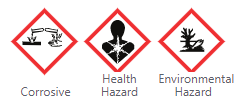 |
| 信号 | Danger |
| GHS危险说明 | Aggregated GHS information provided by 2 companies from 1 notifications to the ECHA C&L Inventory. Each notification may be associated with multiple companies. |
| H318 (100%): Causes serious eye damage [Danger Serious eye damage/eye irritation] | |
| H372 (100%): Causes damage to organs through prolonged or repeated exposure [Danger Specific target organ toxicity, repeated exposure] | |
| H411 (100%): Toxic to aquatic life with long lasting effects [Hazardous to the aquatic environment, long-term hazard] | |
| Information may vary between notifications depending on impurities, additives, and other factors. The percentage value in parenthesis indicates the notified classification ratio from companies that provide hazard codes. Only hazard codes with percentage values above 10% are shown. | |
| 防范说明代码 | P260, P264, P270, P273, P280, P305+P351+P338, P310, P314, P391, and P501 |
| (The corresponding statement to each P-code can be found at the GHS Classification page.) |
| Havlir DV, et al. Atazanavir: new option for treatment of HIV infection. Clin Infect Dis. 2004 Jun 1;38(11):1599-604. |
| Wood R. Atazanavir: its role in HIV treatment. Expert Rev Anti Infect Ther. 2008 Dec;6(6):785-96. |
阿扎那韦(198904-31-3,Atazanavir,BMS-232632)参考文献:
1. Variations of the P2 group in HIV-1 protease inhibitors containing a tertiary alcohol in the transition-state mimicking scaffold
Jenny K. Ekegren, Johan Gising, Hans Wallberg, Mats Larhed, Bertil Samuelsson and Anders Hallberg*. Org. Biomol. Chem., 2006, 4, 3040–3043
Several of the approved HIV-1 protease inhibitors comprise relatively small, cyclic P2 structural elements. This is the case for example with amprenavir, containing tetrahydrofuran as the P2 group and for nel?navir with a phenol-related structure in this position. On the other hand, the most recently launched inhibitor atazanavir, carries N-derivatized amino acid residues in the P2/P3 and P2’/P3’positions. Wewere encouraged to evaluate structural units representing both these types of substituents as potential P2 groups in our new inhibitors. The HIV-1 protease inhibition data summarized in Table 1 suggest that the size and polarity of the P2 substituent are crucial to allow proper accommodation in the S2 sub-site. Small P2 groups, unable to reach the enzyme S3 pocket, furnish poor to moderate inhibitory potencies. Furthermore, the distance between the transition-state mimicking tertiary hydroxyl group and P2 aromatic ring structures in 10, 12 and 13 proved to be of importance. A methylene spacer between the amide bond and the P2 aryl group as in compound 10 afforded a 5 to 13 times more potent inhibitor than 12 and 13 (Table 1). The amino acid-derived P2 substituents in compounds 14–18 have the potential of reaching both the enzyme S2 and S3 pockets, which could be bene?cial for ef?cient binding. However, the bulkiness of the P2 side chain strongly affected inhibition and only the iso-propyl group present in compounds 14 and 15 provided highly potent inhibitors (Table 1).
2. HIV-1 protease inhibitors with a tertiary alcohol containing transition-state mimic and various P2 and P1'substituents
Per Ohrngren, Xiongyu Wu, Mats Larhed*. Med. Chem. Commun., 2011, 2, 701
With this background, we were interested in developing a straightforward synthetic approach for the incorporation of new amino acid derived P2–P3 groups into compound C, since amino acid derivated P2–P3 substituents have been successful in the case of the approved inhibitor Atazanavir (Atz) (Fig. 2). Furthermore, we aimed at optimising the most potent derivative in the P2–P3 series by creating a small library of compounds with various aromatic P1’ substituents using microwave accelerated, palladium-catalysed Suzuki–Miyaura and Sonogashira reactions. Within this article we present the synthetic protocols and the inhibitory potency on enzyme and in cell based assay of the ?nal products, together with X-ray evaluation of two of the inhibitors.
3. Intramolecular hydrogen bonding to improve membrane permeability and absorption in beyond rule of ?ve chemical space
Alexander Alex, David S. Millan,* Manuel Perez, Florian Wakenhut and Gavin A. Whitlock. Med. Chem. Commun., 2011, 2, 669
In line with the above thoughts and observations, atazanavir has high intrinsic cell permeability in an MDCK cell line suggesting the apparent polarity of the compound is lower than would be expected given its calculated physicochemistry. Rat pharmacokinetics also suggests the compound is well absorbed, but has low bioavailability due to high ?rst pass clearance (Table 3). These data support the notion that atazanavir does indeed form an IHB stabilised conformation that hides its polarity and enables passive membrane permeation and therefore intestinal absorption to occur in rats and in human.
4. Discovery of GS-8374, a potent human immunode?ciency virus type 1 protease inhibitor with a superior resistance pro?le
Gong-Xing He, Zheng-Yu Yang, Lianhong Xu*. Med. Chem. Commun., 2011, 2, 1093
Boosting of PIs with low-dose RTV is now widely used to achieve desirable drug plasma concentrations, which lead to improved viral suppression while decreasing both the dosing frequency and pill burden. Current HIV treatment guidelines recommend ritonavir-boosted atazanavir (ATV) or darunavir (DRV) as a third agent of choice for ?rst line antiretroviral therapy. Although there are nine PIs currently licensed for the treatment of HIV-1, and new generation PIs show better pharmacological properties than the earlier agents, pro?les of most of the currently approved PIs can be further improved. The clinical bene?t of this class of anti-retrovirals in general is still limited by several factors including resistance and long-term safety and tolerability. Among these, the emergence of drug-resistant HIV-1 variants continues to be a major cause of treatment failure and presents a major challenge to the control of HIV infection. In addition, with the exception of ATV, other PIs require high dose and/or frequent dosing regimens, limiting their use in ?xed dose combination regimens. Therefore, the design of novel PIs with more favorable resistance pro?les and convenient dosing regimens remains a consistent interest in the scienti?c community. This communication describes the discovery and characteristics of GS-8374 (compound 1, Fig. 1), a potent and orally bioavailable PI with a superior resistance pro?le against a spectrum of patient-derived HIV-1 variants highly resistant to multiple PIs. Because of its favorable pharmacological pro?le, GS-8374 (compound 1) has been further explored as a potential candidate for clinical development.
化学品安全技术说明书 | 版本:1.0 | |||
按照GB/T16483、GB/T17519编制 | 修订日期:10.07.2019 | |||
| 打印日期:19.02.2020 | |||
版权所有:范德(北京)生物科技有限责任公司 | 最初编制日期:25.05.2017 | |||
公司网站:WWW.BIO-FOUNT.COM | SDS编号:YZM000673 | |||
版权所有:BIOFOUNT BEIJING BIO TECH CO.,LTD | 产品编号:YZM000673 | |||
Atazanavir | ||||
说明书目录 | ||||
第1部分 | 第2部分 | 危险性概述 | ||
第3部分 | 成分/组成信息 | 第4部分 | 急救措施 | |
第5部分 | 消防措施 | 第6部分 | 泄露应急处理 | |
第7部分 | 操作处置与储存 | 第8部分 | 接触控制/个体防护 | |
第9部分 | 理化性质 | 第10部分 | 稳定性和反应性 | |
第11部分 | 毒理学信息 | 第12部分 | 生态学危害信息 | |
第13部分 | 废弃处置 | 第14部分 | 运输信息 | |
第15部分 | 法律法规信息 | 第16部分 | 其他补充信息 | |
第1部分:化学品及企业标识 | ||||
1.1 产品标识 | ||||
Atazanavir | ||||
ENGLISH NAME: | Atazanavir | |||
YZM000673 | ||||
BIOFOUNT | ||||
198904-31-3 | ||||
1.2 安全技术说明书提供者的详情 | ||||
制造商或供应商名称: | ||||
制造地址: | 59 KANGTAI AVENUE BINHAI NEW DISTRICT TIANJIN 300450 TIANJIN CHINA 范德(天津)生物科技有限责任公司 天津市滨海新区康泰大道59号九州通绿谷健康产业园 邮政编码:300450 | |||
电话号码: | | |||
1.3 应急咨询电话 | ||||
紧急联系电话: | | |||
1.4 物质或混合物的推荐用途和限制用途 | ||||
已确认的各用途: | 仅用于科学研发,不作为药品、家庭或其它用途。 | |||
第2部分:危险性概述 | ||||
2.1 GHS危险性类别 | ||||
暂无数据 | ||||
2.2 GHS 标签要素,包括防范说明 | ||||
象形图 | ||||
暂无数据 | ||||
暂无数据 | ||||
暂无数据 | ||||
警告申明 | ||||
暂无数据 | ||||
暂无数据 | ||||
事故响应 | ||||
1.化学品使用过程中,当出现事故或者有紧急情况发生时,当事人应第一时间向应急小组负责人汇报后,由应急小组采取措施防止事态扩大。2.应急小组对受害人采取救护措施。 | ||||
请根据产品建议的存储条件进行存储,Please store the product under the recommended condition sin the description. | ||||
废弃处置 | ||||
暂无数据 | ||||
2.3 物理和化学危险 | ||||
暂无数据 | ||||
2.4 健康危害 | ||||
暂无数据 | ||||
2.5 环境危害 | ||||
暂无数据 | ||||
2.6 其它危害物 | ||||
暂无数据 | ||||
第3部分:成分/组成信息 | ||||
物质/混合物 | 暂无数据 | |||
3.1 物 质 | ||||
C38H52N6O7 | ||||
704.86 | ||||
198904-31-3 | ||||
EC-编号 | 暂无数据 | |||
根据相应法规,无需披露具体组份。 | ||||
第4部分:急救措施 | ||||
4.1 必要的急救措施描述 | ||||
吸入 | ||||
立即将患者移至空气新鲜处,发现呼吸困难时,必须立即采取吸氧处理,停止呼吸时采取人工呼吸。同时联系及时就医。 | ||||
皮肤接触 | ||||
立即脱去或者剪去污染的衣物,迅速用大量的流动清水冲10-20分钟甚至更长时间后,赴医院就医。 | ||||
眼睛接触 | ||||
立即用大量的流动清水冲10-20分钟后赴医院就医处理。 | ||||
食入 | ||||
误食化学物品后,应立即采取措施进行催吐。1.若误食化学品呈酸性,则可服用大量牛奶和水,促使食如折呕吐。2.若误食化学品呈碱性,则可服用大量牛奶、清水和醋,促使其呕吐,紧急处理后,应及时送至医院进行治疗(仅供参考)。食如者昏迷状态下禁止催吐,以免造成窒息。 | ||||
4.2 最重要的症状和健康影响 | ||||
最重要的已知症状及作用已在标签(参见章节2.2)和/或章节11中介绍 | ||||
暂无数据 | ||||
4.4 对医生的特别提示 | ||||
暂无数据 | ||||
第5部分:消防措施 | ||||
5.1 灭火介质 | ||||
采用泡沫灭火器、二氧化碳灭火器,避免造成二次污染发生。 | ||||
5.2 源于此物质或混合物的特别的危害 | ||||
暂无数据 | ||||
5.3 灭火注意事项及保护措施 | ||||
小规模着火需戴好口罩,防止有毒气体吸入。火灾发生时及时启动应急相应系统撤离至上风口处,并联系当地消防部门灭火。 | ||||
第6部分:泄露应急处理 | ||||
1.泄露后首先启动应急相应系统2.泄露处理前,需穿戴好安全安全防护鞋、穿戴好安全防护手套(强酸性物质需穿戴防酸碱手套)、根据吸入危险性穿戴相应防护面罩。 有关个人防护,请看第8部分。 | ||||
6.2 环境保护措施 | ||||
参照《范德生物化学废弃物处理方法》处理,防止对环境造成危害,处理后交由有资质的废弃物处理结构进行处理,以免造成环境污染。 | ||||
参照《范德生物化学品废弃物处理方法》对泄露的化学品进行处理,处理前需用化学品吸附岩棉对泄露区域进行围挡,形成“围堰”防止泄露扩大。 | ||||
6.4 参考其他部分 | ||||
丢弃处理请参阅第13节。 | ||||
第7部分:操作处置与储存 | ||||
7.1 安全操作的注意事项 | ||||
使用过程请穿戴好口罩,手套等防护用品,避免与皮肤接触、吸入、误食危险。 有关预防措施,请参见章节2.2。 | ||||
7.2 安全储存的条件,包括任何不兼容性 | ||||
暂时无法提供详细数据,尽可能避免与其他化合物混合存储,避光、通风处存储。 | ||||
第8部分:接触控制/个体防护 | ||||
8.1 控制参数 | ||||
暂无数据 | ||||
8.2 暴露控制 | ||||
适当的技术控制 | ||||
暂无数据 | ||||
个体防护装备 | ||||
一般情况下穿戴安全防护眼镜即可,如有飞溅液体、粉末产生时,请佩戴防溅面罩进行防护。穿戴的防护用品需取得如:GB、NIOSH (美国) 或 EN 166(欧盟) 等相关认证。 | ||||
手套脱去注意事项:手套在使用前必须进行检查,请使用正确的方法脱除手套(不接触手套外部表面),避免身体任何皮肤部位接触到此产品。根据相关法律法规和实验室管理规范制度,手套使用过后,请将被污染的手套谨慎处理,工作后清洗并吹干双手。 所选择的保护手套必须符合法规《劳动防护用品配备标准》、(EU)2016/425以及从此类法规衍生出来的EN 374标准规范。 完全接触保护要求: 手套材料:丁腈橡胶 手套最小的层厚度:0.11 MM 手套溶剂渗透时间:480 分钟 飞溅保护要求: 材料:丁腈橡胶 最小的层厚度 0.11 MM 溶剂渗透时间:480 分钟 如果以溶剂形式应用或与其它物质混合应用,或在不同于《劳动防护用品配备标准》,EN 374规定的条件下应用,请与EC批准的手套的供应商联系。该条只是作为推荐性建议,如遇特殊情况,务必请熟悉该产品属性的专家,选取相关防护用品。此条建议不应该被认定为适应所有特殊条件防护,请根据所处工作条件请求专业工程师指导采取相应防护措施。 | ||||
选择身体部分的防护措施,需要根据危险物质的类型、浓度、量以及特定的工作环境。身体部分防护设备、防护服的类型,必须根据使用者工作场所中的危险物质的浓度、数量进行选择。 | ||||
一般情况下穿戴普通的医用口罩保护呼吸系统即可。有酸雾产生式活性炭类口罩起不到防护作用,如需对粉尘造成损害进行防护时,请采用N95型(US)或P1型(EN 143)类口罩或者防尘面具。特殊情况下使用自吸式呼吸器时,使用的呼吸器必须对呼吸器密闭性、空气供应系统、供气压进行测试,当然呼吸器需通过强制认证标准如:GB、NIOSH(US)、CEN(EU)。 | ||||
环境暴露的控制 | ||||
不要让产品进入下水道。 | ||||
第9部分:理化特性 | ||||
9.1 基本的理化特性的信息 | ||||
形状:暂无数据 | ||||
| 颜色:暂无数据 | |||
气味 | 暂无数据 | |||
气味阈值 | 暂无数据 | |||
暂无数据 | ||||
暂无数据 | ||||
初沸点和沸程 | 暂无数据 | |||
闪点 | 暂无数据 | |||
蒸发速率 | 暂无数据 | |||
易燃性(固体,气体) | 暂无数据 | |||
高的/低的燃烧性或爆炸性限度 | 暂无数据 | |||
蒸气压 | 暂无数据 | |||
蒸气焓 | 暂无数据 | |||
密度/相对密度 | 1.2±0.1 g/cm3 | |||
10 mM in DMSO; 100 mM in 1.2 eq. NaOHMedChem ExpressHY-17367DMSO MethanolMedChem ExpressHY-17367 | ||||
正辛醇/水分配系数 | 暂无数据 | |||
正辛醇空气分配系数 | 暂无数据 | |||
自燃温度 | 暂无数据 | |||
分解温度 | 暂无数据 | |||
黏度 | 暂无数据 | |||
暂无数据 | ||||
氧化性 | 暂无数据 | |||
根据碎片估算水溶胶 | 暂无数据 | |||
亨利定律常数(25摄氏度) | 暂无数据 | |||
9.2 其他安全信息 | ||||
暂无数据 | ||||
第10部分:稳定性和反应性 | ||||
10.1 稳定性 | ||||
暂无数据 | ||||
10.2 危险反应 | ||||
暂无数据 | ||||
10.3 应避免的条件 | ||||
暂无数据 | ||||
10.4 禁配物 | ||||
强氧化剂 | ||||
10.5 危险的分解产物 | ||||
暂无数据 | ||||
第11部分:毒理学信息 | ||||
11.1 毒理学影响信息 | ||||
暂无数据 | ||||
皮肤腐蚀/刺激 | ||||
暂无数据 | ||||
暂无数据 | ||||
呼吸或皮肤过敏 | ||||
暂无数据 | ||||
暂无数据 | ||||
暂无数据 | ||||
生殖毒性 | ||||
暂无数据 | ||||
特异性靶器官系统毒性(一次接触) | ||||
暂无数据 | ||||
特异性靶器官系统毒性(反复接触) | ||||
暂无数据 | ||||
吸入危害 | ||||
暂无数据 | ||||
附加说明 | ||||
暂无数据 | ||||
第12部分:生态学危害信息 | ||||
12.1 生态毒性 | ||||
暂无数据 | ||||
12.2 持久性和降解性 | ||||
暂无数据 | ||||
12.3 快速生物降解的可能性 | ||||
暂无数据 | ||||
12.4 专家调查生物降解结果 | ||||
暂无数据 | ||||
12.5 MITI生物降解的可能性 | ||||
暂无数据 | ||||
12.6 厌氧生物降解的可能性 | ||||
暂无数据 | ||||
12.7 现成的生物降解性预测 | ||||
暂无数据 | ||||
12.8 碳氢化合物生物降解 | ||||
暂无数据 | ||||
12.9 对气溶胶的吸附 | ||||
暂无数据 | ||||
12.10 羟基自由基反应 | ||||
暂无数据 | ||||
12.11 臭氧反应 | ||||
暂无数据 | ||||
12.12 空气中颗粒物吸附的分数(PHI) | ||||
暂无数据 | ||||
12.13 土壤吸附系数 | ||||
暂无数据 | ||||
12.14 碱/酸催化水解(25℃) | ||||
暂无数据 | ||||
12.15 利用对数KOW估算生物累积量 | ||||
暂无数据 | ||||
12.16 废水处理中的去除 | ||||
暂无数据 | ||||
12.17 三级逸度模型 | ||||
暂无数据 | ||||
12.18 土壤中的迁移性 | ||||
暂无数据 | ||||
12.19 PBT和VPVB的结果评价 | ||||
暂无数据 | ||||
12.20 其他环境有害作用 | ||||
暂无数据 | ||||
第13部分:废弃处置 | ||||
13.1 废物处理 | ||||
None | ||||
None | ||||
第14部分:运输信息 | ||||
14.1 联合国编号 / UN NUMBER | ||||
欧洲陆运危规 / ER/RID: | None | |||
国际海运危规 / IMDG: | None | |||
国际空运危规 / IATA-DGR: | None | |||
14.2 联合国运输名称 / UN PROPER SHIPPING NAME | ||||
欧洲陆运危规: | None | |||
国际海运危规: | None | |||
国际空运危规: | None | |||
欧洲陆运危规 / ER/RID: | None | |||
国际海运危规 / IMDG: | None | |||
国际空运危规 / IATA-DGR: | None | |||
欧洲陆运危规 / ER/RID : | None | |||
国际海运危规 / IM0DG: | None | |||
国际空运危规 / IATA-DGR: | None | |||
None | ||||
14.6 特殊防范措施 / SPECIAL PRECAUTIONS FOR USER | ||||
None | ||||
None | ||||
第15部分:法律法规信息 | ||||
适用法规 | ||||
《中华人民共和国安全生产法》、《职业病防治法》、《化学化工实验室安全管理规范》 | ||||
其它的规定 | ||||
《生产安全事故报告和调查处理条例》、《职业病防治法》、《职业安全和卫生法》美国1970 | ||||
第16部分:其他补充信息 | ||||
其他信息 版权所有:BIOFOUNT BEIJING BIO TECH CO.,LTD 公司。许可无限制纸张拷贝,仅限于内部使用。 上述信息视为正确,但不包含所有的信息,仅作为指引使用。本文件中的信息是基于我们目前所知,就正确的安全提示来说适用于本品。该信息不代表对此产品性质的保证。BIOFOUNT公司及其附属公司对任何操作或者接触上述产品而引起的损害不负有任何责任。更多使用条款,参见发票或包装条的反面。 更多销售条款及条件请参见HTTP://WWW.BIO-FOUNT.COM/或发票或装箱单的背面。欲悉详情,请联系:SALES@BIO-FOUNT.COM | ||||
- 相关产品
-
< >
- 推荐产品
-
< >
- 最新产品
-
< >
新闻
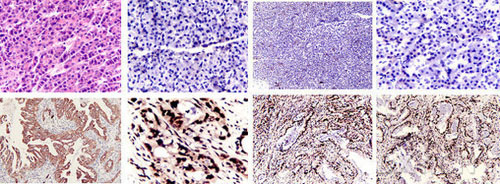
怎么做细胞爬片免疫组化染色实验
细胞爬片免疫组化染色,是通过细胞爬片是让玻片浸在细胞培养基内,细胞在玻片上生长,主要用于组织学,免疫组织化学...
2020/7/20 22:04:33
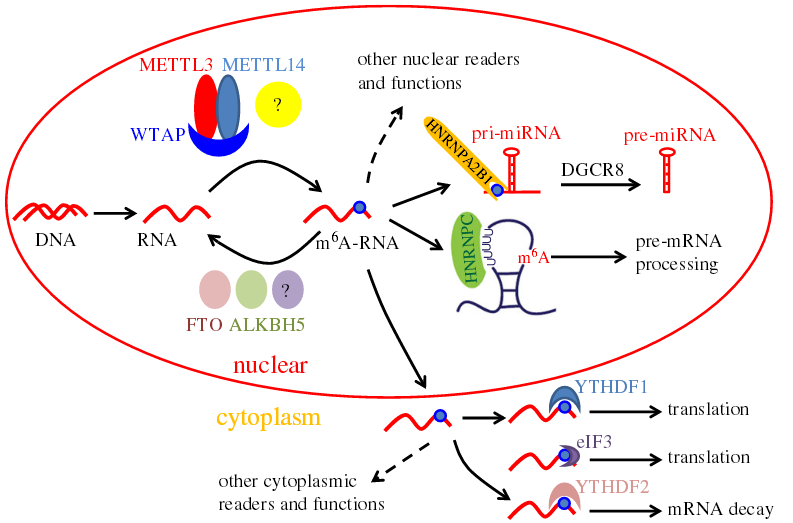
提取病毒RNA的实验方法
提取病毒RNA方法分别有:异硫氰酸胍的提取病毒RNA方法、TRIzol LS提取法、Trizol法提取法等等...
2020/7/22 20:29:26

9月开学季——助研新学期 范德送好礼
2025/8/28 15:30:55
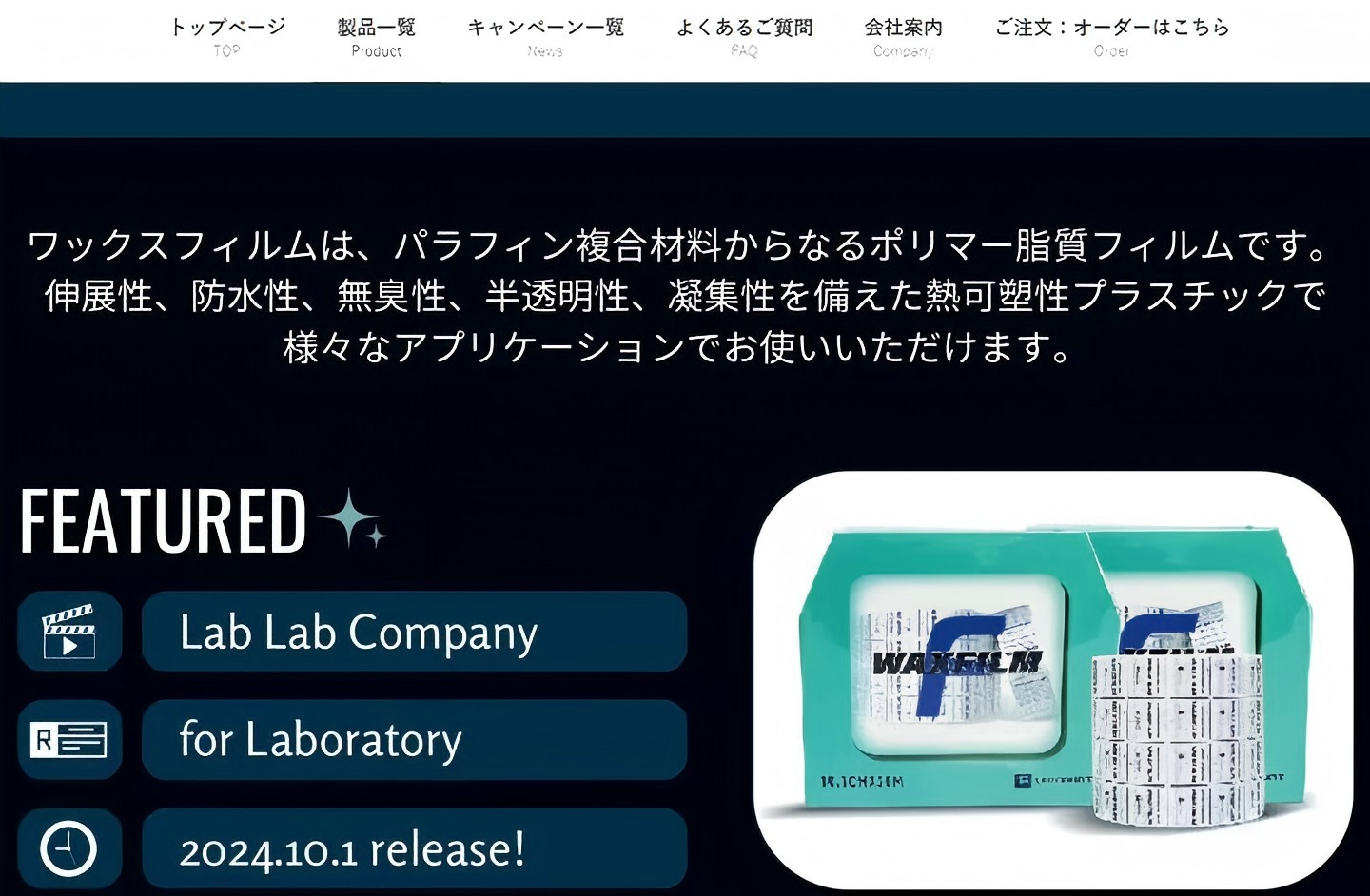
Waxfilm 实验室封口膜:技术与国际市场的双重突破
在实验室耗材领域,封口膜是保障实验准确性与稳定性的关键产品之一。近年来,Waxfilm?实验室封口膜凭借其卓...
2025/5/13 13:03:40
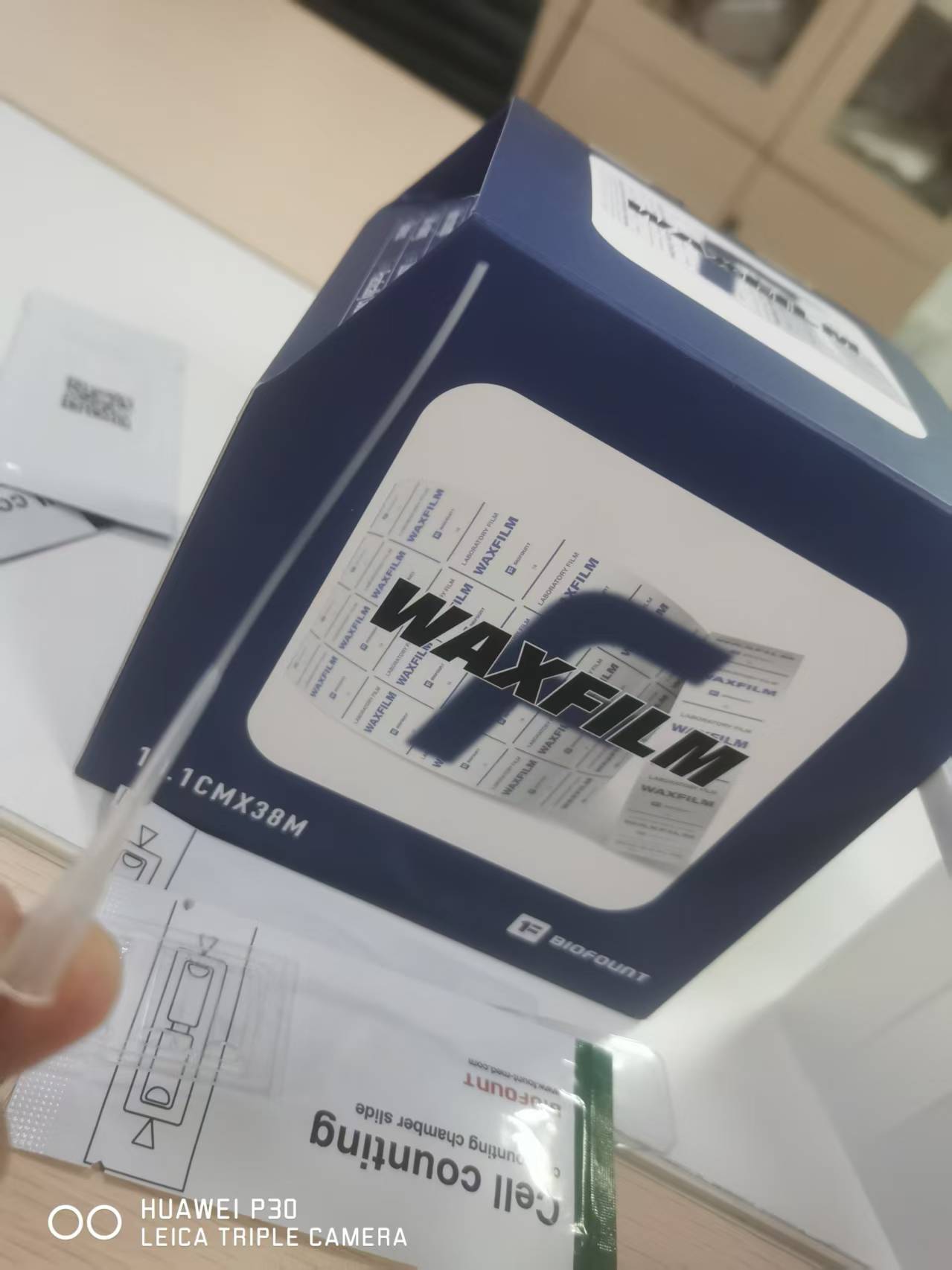
Waxfilm实验室封口膜的5大突破
Waxfilm实验室封口膜作为生物功能膜领域的国产技术突破和品牌突破,是生物领域中国技术发展的缩影。
2025/5/6 17:02:07
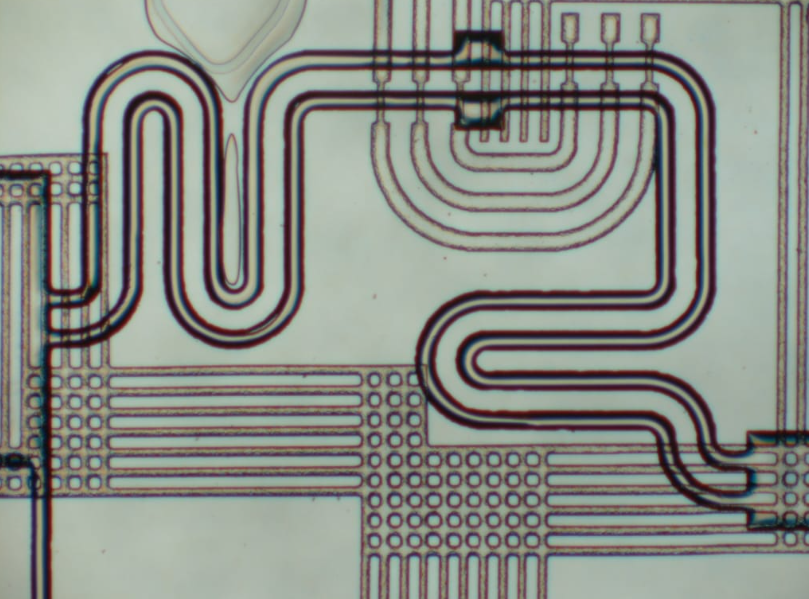
各种微流控芯片键合方法的优缺点
微流控芯片键合:目前主要有激光焊接、热压键合、胶键合、超音波焊接,每种方法都有各自的优缺点。本文主要介绍聚酯...
2023/7/28 10:43:09
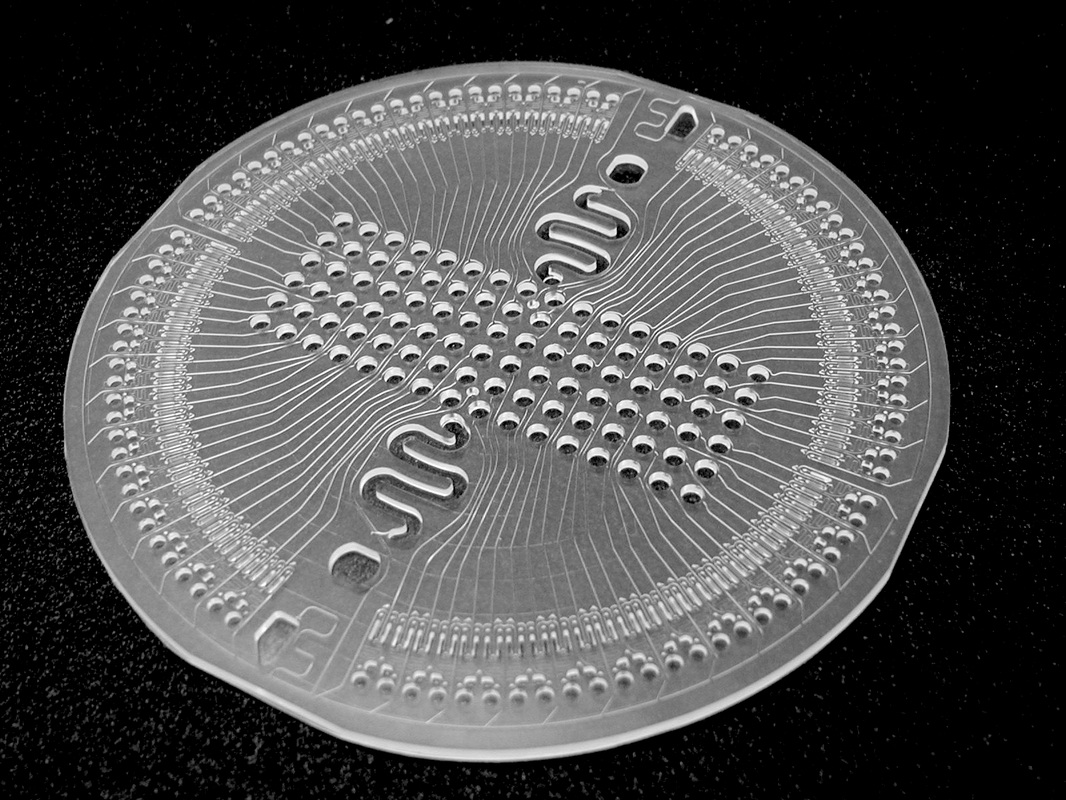
新一代微流控键合解决方案
微流控键合解决方案:微流控芯片制造的一个重要环节,也是最容易被忽视的--芯片键合。其中一个重要因素是:微流控...
2023/7/27 12:44:28
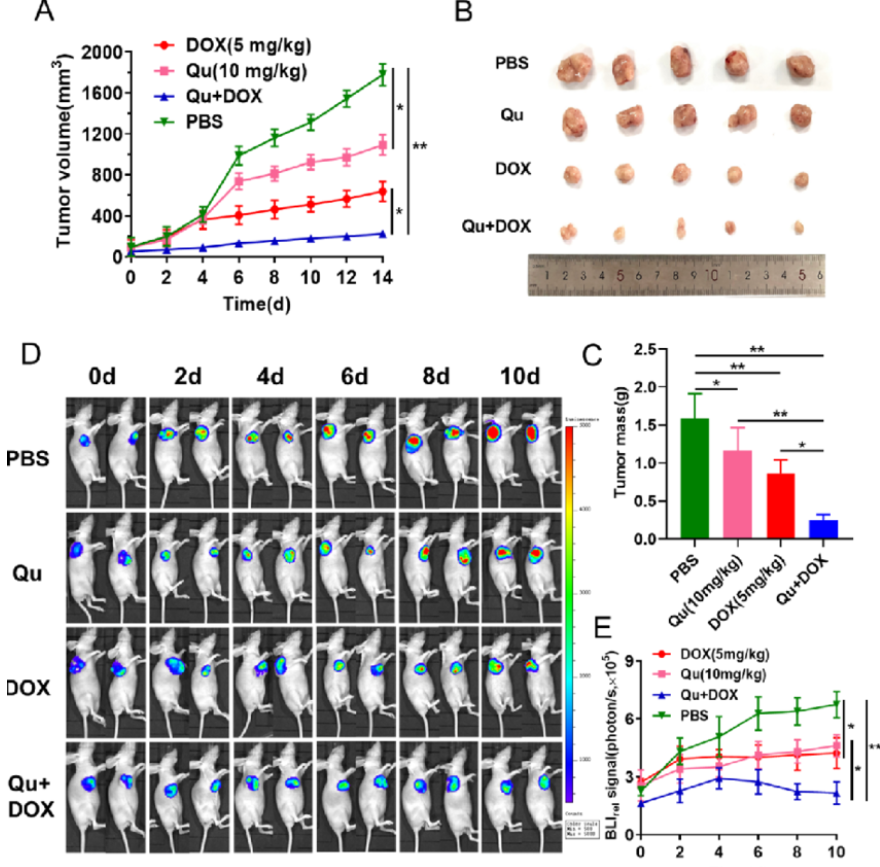
荧光素钾盐使用说明
D-荧光素钾盐(K+)设计用于体外和体内生物发光测定。D-荧光素的质量和纯度对于获得良好和可重复的结果至关重...
2023/7/20 11:05:11
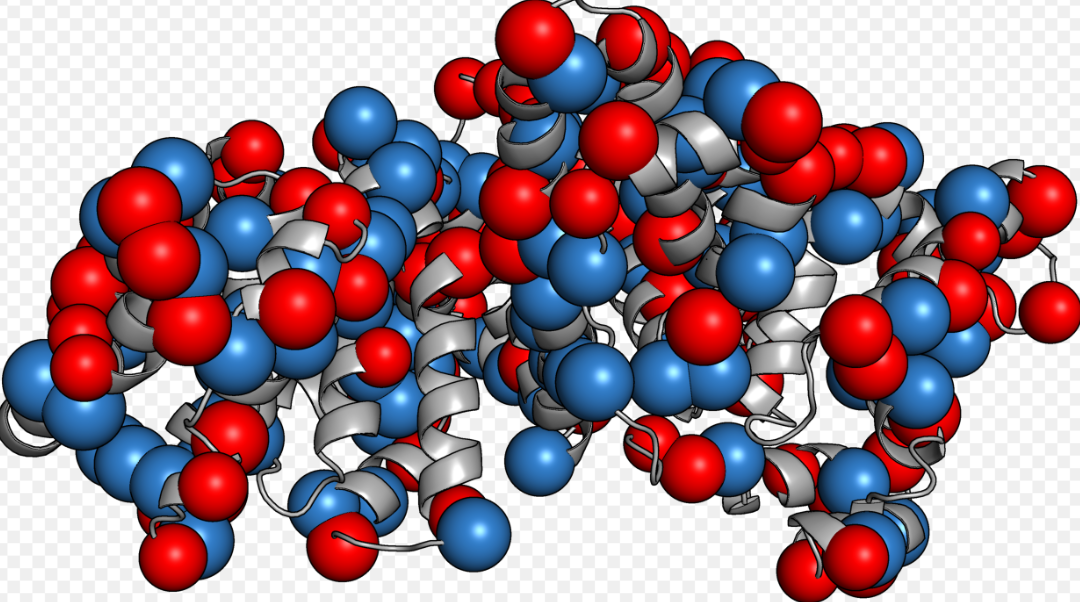
如何选BSA(牛血清白蛋白)
如何选BSA(牛血清白蛋白):牛血清白蛋白(BSA)有多种形式,如何选择适合自己的牛血清白蛋白(BSA)是一...
2023/2/14 13:09:18
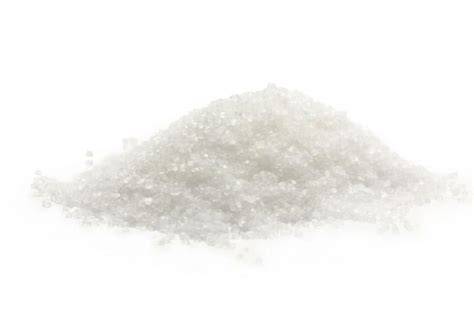
牛血清白蛋白(BSA)常见问题
牛血清白蛋白(BSA)常见问题:牛血清白蛋白(BSA)在实验室中是通用的,可用于蛋白质印迹、细胞组织培养、P...
2022/10/19 9:39:51




 购物车
购物车 



